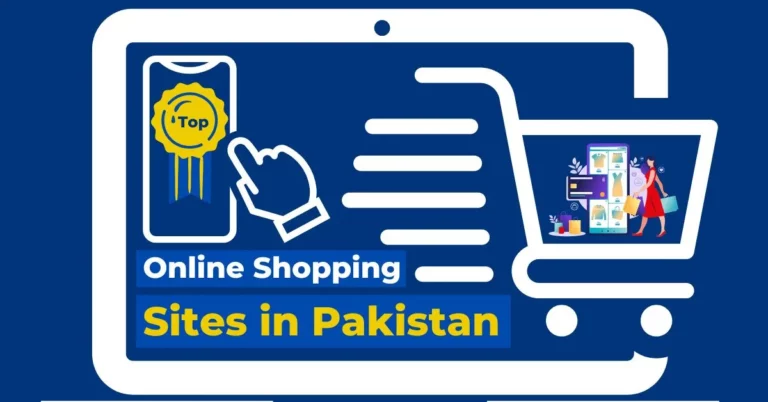
Blogging has become a profitable way for people to express their opinions, knowledge, and experiences in the digital era. Aspiring bloggers may benefit from Pakistan’s expanding internet penetration and tech-savvy populace.
If you want to start blogging in Pakistan, this complete guide will provide you with the information and actions you need.
From selecting your specialty to setting up your blog and optimizing it for search engines, let’s explore blogging!
Understanding the Blogging Landscape in Pakistan
Understanding Pakistan’s blogging scene is vital before beginning a blog. Technology, fashion, leisure, gastronomy, travel, and more are covered by the country’s active blogging community.
This broad ecology lets you discover niches and develop your voice in the Pakistani blogging community.
Define Your Blogging Niche: Step-by-Step Guide
Successful Key Factors in blogging start with defining your niche. Your blog’s specialty is its emphasis. Choose a specialty you love and understand. By focusing, you may attract a certain audience and become an expert in that field.
To define your blogging niche, consider the following steps:
- Identify your interests and expertise: Start by brainstorming subjects that interest you. Consider your interests, knowledge, and skills. This will help you locate a specialty that matches your enthusiasm.
- Research existing blogs: Explore blogs in your interests. Assess their audience, content, and interaction. Look for holes or underdeveloped areas you can fill with your unique viewpoint.
- Evaluate market demand: It’s crucial to find a subject you’re enthusiastic about and make sure there’s a demand for material in it. Use keyword research tools to determine keyword search volume and competitiveness in possible niches. This shows market demand and audience size.
- Consider profitability: It’s important examining the profitability of your specialty. Investigate monetization options including affiliate marketing, sponsored content, and niche-related sales.
- Assess your long-term interest: Building a successful blog takes time and consistent effort. Ensure that your chosen niche is something you’ll be passionate about in the long run. It’s crucial to enjoy what you write about to maintain motivation and produce quality content consistently.
Consider your hobbies, experience, market need, profitability, and long-term interest to develop a blogging niche that is distinctive, entertaining, and likely to attract and sustain a loyal audience.
Remember, your specialization should represent your hobbies and skills to stand out in the crowded blogosphere.
Research Keywords and Competition: Step-by-Step Guide
Search engine optimization and outranking other websites need keyword and competition research. You may generate focused, relevant, and search engine-friendly content by choosing the proper keywords and analyzing your competitors.
Keyword and competition research steps:
- Brainstorm relevant topics: Start with niche-related ideas. Think about the primary themes, subtopics, and keywords individuals could search for while seeking specialty information.
- Use keyword research tools: Use Google Keyword Planner, SEMrush, Ahrefs, or Moz’s Keyword Explorer for keyword research. These tools provide search volume, difficulty, and related terms. These programs produce appropriate keywords from discussed concepts or seed keywords.
- Analyze search volume: Look for terms with sufficient search volume. Higher search volume implies more people are looking for those keywords, which might imply more traffic to your site if you rank high for them. Find a balance between terms with high search volume and low competition.
- Assess keyword difficulty: Consider each keyword’s complexity or competitiveness. Keyword difficulty is the difficulty of ranking for a keyword. Find keywords with moderate to low competition to rank higher. SEMrush and Ahrefs give keyword difficulty ratings to measure competition.
- Analyze the competition: Check your keywords’ top sites. Examine their blogs’ writing, structure, and user experience. Find holes where you can provide unique and useful information to set yourself apart.
- Long-tail keywords: Use long-tail keywords. Long-tail keywords target a smaller audience. They have less search traffic but less competition, making them easier to rank for.
- Optimize content with keywords: Use keywords wisely after finding them. Use them in blog post titles, headers, subheadings, and bodies. However, employ keywords organically without compromising readability or quality.
Keyword research is underway. To remain relevant and outrank niche competitors, adjust your keyword approach as you develop content and receive audience data.
Find the proper keywords and study your competitors to optimize your blog for search engines and improve organic traffic.
Setting Up Your Blog: Step-by-Step Guide
Starting a blog is fun but takes strategy and execution. Five key actions to start:
- Choose a Platform: Choose a blogging platform that fits you. WordPress, Blogger, and Wix are popular. Consider customization, usability, and scalability.
- Select a Domain Name: Choose a catchy domain name that matches your blog’s aim. Make it niche-relevant and simple to spell and pronounce. Use a reliable domain registrar.
- Web Hosting: Choose a web host with high performance, uptime, and support. Consider storage, bandwidth, and scalability. Host your blogging platform. Recommended: Hosting for beginners.
- Customize Your Blog: Choose a beautiful, responsive theme that matches your blog’s style and functionality. Create a distinctive brand identity by customizing layouts, fonts, colors, and logos.
- Essential Plugins: Install critical plugins for blog security and functionality. SEO, contact form, and caching plugins are examples. Find plugins that meet your requirements.
These instructions will help you start a blog. Remember to create a visually beautiful and user-friendly platform that represents your distinct brand and gives your readers a smooth experience.
Designing a User-Friendly Blog: Step-by-Step Guide
Designing a user-friendly blog is crucial for providing a seamless and enjoyable experience to your readers.
Here are five simple yet effective tips to create a user-friendly blog design:
- Clear Navigation: Maintain a simple blog navigation menu. To help users discover information, organize your material into appropriate categories and subcategories.
- Responsive Design: Implement a responsive design for your blog. This guarantees that your blog adjusts to multiple screen sizes, delivering a consistent and user-friendly experience across desktop, mobile, and tablet platforms.
- Readability: Use readable fonts for your blog. Subheadings and shorter paragraphs increase readability. Avoid crowding your content with white space.
- Fast Loading Speed: To avoid visitors leaving, speed up your blog. Reduce website load time via compressing images, minimizing plugins, and caching. A fast-loading blog makes people stay and explore.
- Intuitive User Interface: Make your blog easy to navigate. Use attractive buttons and clickable components. Search feature helps people locate subjects fast.
These design concepts may help you establish a user-friendly blog that improves reader experience.
Remember, simplicity, ease of navigation, and aesthetic appeal are vital to a great user experience that keeps people coming back.
Crafting Engaging Content: Step-by-Step Guide
Engaging material keeps readers coming back. Give your target audience useful, helpful, and engaging blog postings. Tips for writing intriguing content:
- Know your audience: Know your audience’s demographics, interests, and problems. Knowing their demands will help you write content that grabs their attention. For reader input, consider surveys or dialogues.
- Create compelling headlines: Create captivating headlines that draw viewers to your blog entries. Action words, figures, and fascinating statements attract curiosity. Ensure the title matches the substance and delivers.
- Tell stories: Use narrative to make your material more engaging. Use personal tales, case studies, or success stories to demonstrate essential themes. Readers are drawn in by stories.
- Use conversational tone: To make your material more accessible and interesting, write in a conversational tone. Avoid using unnecessarily formal or jargon-heavy language. Create a kind, relatable tone as though you’re talking to a buddy.
- Use visuals: Incorporate relevant images, videos, infographics, or GIFs to enhance your content. Visuals break up the text and make your blog posts more visually appealing. They can also help illustrate complex concepts, engage readers’ attention, and increase social media shares.
- Make it scannable: Most readers scan content before deciding whether to read it in detail. Make your content scannable by using subheadings, bullet points, and short paragraphs. Highlight important points using bold or italicized text. This allows readers to quickly grasp the main ideas and encourages them to read further.
- Provide value: Ensure that your content offers value to your readers. Whether it’s practical tips, expert insights, in-depth analysis, or entertaining stories, make sure readers can take something away from each blog post. Offer unique perspectives, actionable advice, or solve common problems your audience faces.
- Encourage interaction: Engage your readers by encouraging them to leave comments, ask questions, or share their thoughts. Respond to comments promptly and foster discussions. This creates a sense of community and makes readers feel heard and valued.
- Use storytelling formats: Experiment with different content formats to keep your blog posts engaging. Incorporate listicles, how-to guides, interviews, opinion pieces, or product reviews to provide variety and cater to different reader preferences.
- Edit and proofread: Edit and check your writing before posting. Correct language, spelling, and punctuation to improve blog readability and professional appearance.
Use these ideas to generate compelling content that keeps readers coming back. Always evaluate your material, get feedback, and adjust your writing style to meet your audience’s changing demands.
Related to read: How to find free images for website or blog
Implementing SEO Best Practices: Step-by-Step Guide
Implementing SEO best practices is crucial for improving your blog’s visibility and attracting organic traffic. Here are five essential steps to optimize your blog for search engines:
- Keyword Research: Conduct thorough keyword research to identify relevant and high-ranking keywords in your niche. Incorporate these keywords naturally into your blog posts, titles, headings, and meta descriptions.
- Quality Content Creation: Create entertaining, useful, and high-quality material for your audience. Focus on value, reader inquiries, and pain issues. Longer, well-structured pieces that go in-depth are best.
- On-Page Optimization: Optimize your blog posts for on-page SEO. Include relevant keywords in your headings, URL slugs, and image alt tags. Use description meta tags and ensure your content is properly formatted with subheadings, bullet points, and internal links.
- Mobile-Friendliness: Ensure your blog is mobile-friendly and responsive across different devices. With the majority of internet users accessing content on mobile devices, mobile optimization is crucial for SEO success.
- Link Building: Get backlinks from specialized authority sites. Create useful material that draws backlinks. Guest blog, work with influencers, and join industry forums.
These SEO tips help boost your blog’s search engine rankings and organic visitors. Optimizing your blog for search engines requires consistency, relevancy, and user experience.
Promoting Your Blog: Step-by-Step Guide
Promoting your blog is essential to reach a wider audience and increase your blog’s visibility.
Here are five great blog promotion strategies:
- Social Media Promotion: Share your blog posts on prominent social media platforms such as Facebook, Instagram, Twitter, and LinkedIn. Develop a strong social media presence by developing engaging content, using pertinent hashtags, and engaging with your audience.
- Guest Blogging: Guest post on specialized blogs. This attracts new readers and builds blog backlinks. Find credible sites that allow guest posts and give excellent material.
- Email Marketing: Send frequent emails to your email list. Link to your newest blog entries, special information, and tailored updates. Encourage readers to forward your emails to blog-interested others.
- SEO Optimization: Use keywords, meta descriptions, and high-quality content to optimize blog entries for search engines. This boosts SEO and organic visitors to your blog.
- Networking and Collaboration: Meet other bloggers, influencers, and professionals. Share material, collaborate, and participate in podcasts and interviews. Networking increases blog exposure.
These methods can boost blog traffic. To promote your blog, publish quality material, interact with readers, and use many promotional platforms.
Engaging with Your Audience: Step-by-Step Guide
Engaging with your readers builds a great blog community. Here are five easy yet powerful ways to actively interact with your readers:
- Encourage Comments: Encourage readers to leave comments on your blog posts by posing questions or inviting them to share their thoughts. Respond to their comments promptly, fostering a sense of connection and encouraging further interaction.
- Utilize Social Media: Use social media to connect with customers. Share blog articles, ask questions, and reply to comments and messages. This allows direct engagement and strengthens readership.
- Conduct Polls and Surveys: Gain valuable insights into your audience’s preferences and interests by conducting polls or surveys. Ask for feedback on topics, content formats, or any other areas of interest. Use the feedback to tailor your content and provide value that resonates with your readers.
- Offer Exclusive Content: Reward your loyal audience by offering exclusive content or perks. This could include bonus articles, downloadable resources, or early access to new content. Providing something unique shows appreciation and fosters a sense of belonging within your community.
- Host Live Q&A Sessions: Organize live Q&A sessions through platforms like Instagram Live or Facebook Live. Encourage your audience to ask questions about your blog, your niche, or any relevant topic. This real-time interaction allows for direct engagement and deeper connections.
By implementing these strategies, you can actively engage with your audience, nurture relationships, and create a vibrant community around your blog.
Monetizing Your Blog: Step-by-Step Guide
Live-stream Q&As on Instagram or Facebook. Ask your audience about your blog, specialty, or other related topics. Real-time interaction fosters deeper relationships.
- Display advertising: Blog adverts are a popular strategy. Join Google AdSense, Media.net, or Ezoic and strategically insert ads on your blog. Advertisers pay you per click (PPC) or per thousand impressions (CPM) as your blog grows.
- Affiliate marketing: Affiliate marketing lets you earn commissions by advertising other firms’ goods and services. Join affiliate programs like Amazon Associates, CJ Affiliate, and ShareASale. Write helpful product reviews, make recommendations, or include affiliate links. Affiliate links earn you a reward when readers buy.
- Sponsored content: Sponsor content with specialized businesses. Sponsored blog articles, product reviews, social media postings, and giveaways are examples. For audience openness, disclose sponsored content.
- Digital products: Create and market audience-benefiting digital items. E-books, online courses, templates, stock pictures, and premium content are examples. Create high-quality items for your followers and sell them on your site or via Gumroad or Teachable.
- Services: Offer blog-related consulting, coaching, or freelancing services if you’re an expert. Use your blog to advertise your services. Workshops, consulting, and freelance writing are options.
- Membership sites: Create a paid blog membership or unique content section. To attract paying members, provide premium material, resources, forums, or incentives.
- Sponsored posts and brand partnerships: As your site develops, sponsors may offer sponsored content or collaborations. Create engaging sponsored content with like-minded companies. Negotiate a reasonable wage.
- Advertise your own products or services: Use your blog to market your goods and services. Products, consulting, coaching, and seminars are examples. Use your blog’s readership to boost sales and become a topic expert.
- Email marketing: Create a newsletter and email list. Promote your goods, affiliate deals, and special content by email. Provide subscribers with relevant insights, offers, and updates to create trust and income.
- Events and workshops: Create niche-related seminars, webinars, and events. Offer tickets or registration fees and quality material, networking, or instructional sessions.
Monetizing your site takes time. Focus on devoted readers, good material, and connections. To optimize earnings, use alternative monetization options and diversify your revenue sources as your site expands.
If you have a successful blog then you can earn money from Google AdSense in Pakistan. If you don’t wanna use Google AdSense, then you can try the 25 Best Google AdSense Alternative.
FAQs:
Bloggers Earn Per 1,000 Views? Google AdSense or another advertising network may earn a blog $2 to $5 for every 1,000 page views. A 10,000-view-per-day blog may earn $20–$50.
Create food blogs.
Travel blogs.
Wellness blogs.
Lifestyle blogs.
Beauty blogs.
Photo blogs.
Personal blogs.
DIY blogs.
Fashion Blogs.
Blogging may bring you millions or billions, and it costs nothing to start. When beginning a personal/business blog, it’s always the greatest option to get a significant amount of money (requires less than $100/year to start).
Conclusion:
Pakistani bloggers have several options to make their impact online. You can outrank other blogs in your field by identifying your niche, providing high-quality material, using SEO best practices, and connecting with your audience.
Blogging involves patience, dedication, and true love for your subject. Start blogging!
Thanks!





